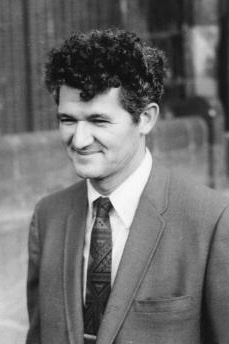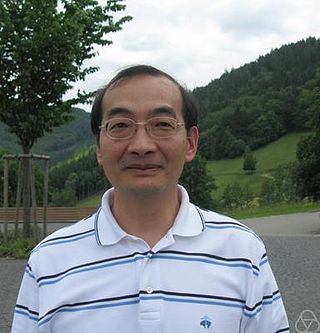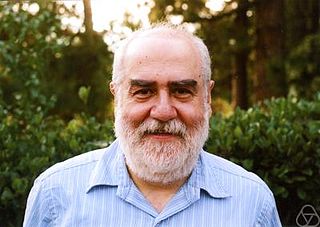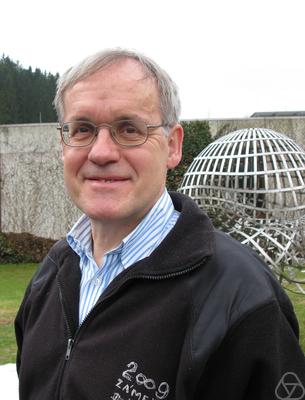
Atle Selberg was a Norwegian mathematician known for his work in analytic number theory and the theory of automorphic forms, and in particular for bringing them into relation with spectral theory. He was awarded the Fields Medal in 1950 and an honorary Abel Prize in 2002.

Peter David Lax is a Hungarian-born American mathematician and Abel Prize laureate working in the areas of pure and applied mathematics.

Lennart Axel Edvard Carleson is a Swedish mathematician, known as a leader in the field of harmonic analysis. One of his most noted accomplishments is his proof of Lusin's conjecture. He was awarded the Abel Prize in 2006 for "his profound and seminal contributions to harmonic analysis and the theory of smooth dynamical systems."

Yakov Grigorevich Sinai is a Russian–American mathematician known for his work on dynamical systems. He contributed to the modern metric theory of dynamical systems and connected the world of deterministic (dynamical) systems with the world of probabilistic (stochastic) systems. He has also worked on mathematical physics and probability theory. His efforts have provided the groundwork for advances in the physical sciences.

Björn Engquist has been a leading contributor in the areas of multiscale modeling and scientific computing, and a productive educator of applied mathematicians.

Peter Clive Sarnak is a South African-born mathematician with dual South-African and American nationalities. Sarnak has been a member of the permanent faculty of the School of Mathematics at the Institute for Advanced Study since 2007. He is also Eugene Higgins Professor of Mathematics at Princeton University since 2002, succeeding Sir Andrew Wiles, and is an editor of the Annals of Mathematics. He is known for his work in analytic number theory. He was member of the Board of Adjudicators and for one period chairman of the selection committee for the Mathematics award, given under the auspices of the Shaw Prize.
James Greig Arthur is a Canadian mathematician working on automorphic forms, and former President of the American Mathematical Society. He is a Mossman Chair and University Professor Emeritus at the University of Toronto Department of Mathematics.

Sathamangalam Ranga Iyengar Srinivasa Varadhan, is an Indian American mathematician. He is known for his fundamental contributions to probability theory and in particular for creating a unified theory of large deviations. He is regarded as one of the fundamental contributors to the theory of diffusion processes with an orientation towards the refinement and further development of Itô’s stochastic calculus. In the year 2007, he became the first Asian to win the Abel Prize.
Charles Samuel Peskin is an American mathematician known for his work in the mathematical modeling of blood flow in the heart. Such calculations are useful in the design of artificial heart valves. From this work has emerged an original computational method for fluid-structure interaction that is now called the “immersed boundary method", which allows the coupling between deformable immersed structures and fluid flows to be handled in a computationally tractable way. With his students and colleagues, Peskin also has worked on mathematical models of such systems as the inner ear, arterial pulse, blood clotting, congenital heart disease, light adaptation in the retina, control of ovulation number, control of plasmid replication, molecular dynamics, and molecular motors.

Günter Matthias Ziegler is a German mathematician who has been serving as president of the Free University of Berlin since 2018. Ziegler is known for his research in discrete mathematics and geometry, and particularly on the combinatorics of polytopes.

Horng-Tzer Yau is a Taiwanese-American mathematician. He received his B.Sc. in 1981 from National Taiwan University and his Ph.D. in 1987 from Princeton University. His Ph.D. thesis Stability of Coulomb Systems was supervised by Elliott Lieb. Yau joined the faculty of NYU in 1988, and became a full professor at its Courant Institute of Mathematical Sciences in 1994. He moved to Stanford in 2003, and then to Harvard University in 2005. He was also a member of the Institute for Advanced Study in Princeton, New Jersey, in 1987–88, 1991–92, and 2003, and was a distinguished visiting professor in 2013–14.
Jens Erik Fenstad was a Norwegian mathematician.

Jayanta Kumar Ghosh was an Indian statistician, an emeritus professor at Indian Statistical Institute and a professor of statistics at Purdue University.

Idun Reiten is a Norwegian professor of mathematics. She is considered to be one of Norway's greatest mathematicians today. With national and international honors and recognition, she has supervised 11 students and has 28 academic descendants as of March 2024. She is an expert in representation theory, and is known for work in tilting theory and Artin algebras.

Helge Holden is a Norwegian mathematician working in the field of differential equations and mathematical physics. He was Praeses of the Royal Norwegian Society of Sciences and Letters from 2014 to 2016.

Gunther Alberto Uhlmann Arancibia is a mathematician whose research focuses on inverse problems and imaging, microlocal analysis, partial differential equations and invisibility.

Alexander (Lex) Schrijver is a Dutch mathematician and computer scientist, a professor of discrete mathematics and optimization at the University of Amsterdam and a fellow at the Centrum Wiskunde & Informatica in Amsterdam. Since 1993 he has been co-editor in chief of the journal Combinatorica.

Eric Mark Friedlander is an American mathematician who is working in algebraic topology, algebraic geometry, algebraic K-theory and representation theory.

Bonnie Anne Berger is an American mathematician and computer scientist, who works as the Simons professor of mathematics and professor of electrical engineering and computer science at the Massachusetts Institute of Technology. She is the head of the Computation and Biology group at MIT's Computer Science and Artificial Intelligence Laboratory. Her research interests are in algorithms, bioinformatics and computational molecular biology.
Lars Hesselholt is a Danish mathematician who works as a professor of mathematics at Nagoya University in Japan, as well as holding a temporary position as Niels Bohr Professor at the University of Copenhagen. His research interests include homotopy theory, algebraic K-theory, and arithmetic algebraic geometry.
















